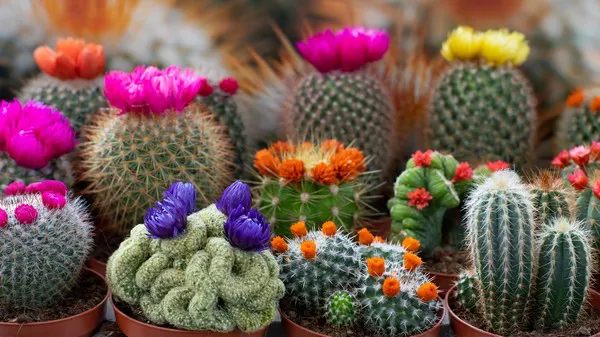Cacti are fascinating plants renowned for their ability to thrive in arid environments. While they are known for their distinctive shapes and resilience, witnessing a cactus bloom with vibrant flowers is a truly remarkable sight. However, getting a cactus to flower can be a challenge for many enthusiasts. In this comprehensive guide, we will explore the key factors involved in inducing flowering in your cactus, providing you with practical tips and insights to help you achieve success.
Understanding Cactus Flowering
Before delving into the techniques of encouraging cactus flowering, it is essential to understand the natural flowering patterns of these plants. Cacti typically bloom during certain seasons or under specific environmental conditions. Some cacti species, such as the night-blooming cereus (Epiphyllum oxypetalum), bloom at night, while others may flower during daylight hours. Understanding the specific requirements of your cactus species will greatly assist in its successful flowering.
Providing Optimal Light Conditions
Proper lighting is crucial for triggering flowering in cacti. Most cacti require bright, indirect light to flourish. Place your cactus near a south-facing window where it can receive ample sunlight, but make sure it’s protected from direct exposure to intense midday sun, as this can cause burn marks on the plant. If adequate natural light is not available, consider using artificial grow lights specifically designed for plants, ensuring a light cycle that mimics natural day-night patterns.
Optimizing Temperature and Humidity
Temperature and humidity levels play a significant role in cactus flowering. Many cacti require a period of cool temperatures followed by warmer conditions to stimulate blooming. During the cooler period, which generally ranges from a few weeks to a couple of months, reduce the temperature to around 50-55°F (10-13°C) during the night. As the warmer period begins, transition the cactus back to its optimal temperature range between 70-80°F (21-27°C). Maintain humidity levels typically found in arid regions, as excess moisture can lead to root rot and hinder flowering.
Appropriate Watering and Fertilization
Watering your cactus correctly is vital for flowering. Cacti are adapted to survive in dry environments, so over-watering can be detrimental. Allow the soil to dry out completely between waterings, and adjust the frequency based on the specific needs of your cactus species. During the blooming stage, slightly increase the watering frequency to support flower development. Additionally, use a balanced fertilizer formulated for cacti once every two to four weeks during the growing season to provide essential nutrients.
Creating Ideal Soil and Pot Conditions
Choosing the right soil and pot conditions can significantly impact your cactus’s ability to flower. Opt for a well-draining soil mix specifically designed for cacti and succulents, ensuring it is gritty and porous to prevent excessive moisture retention. Select a pot with drainage holes to allow excess water to escape freely. Repot your cactus when necessary, preferably during the active growth phase, to provide ample space for root development.
Implementing Dormancy Periods
Many cacti require a dormancy period to encourage blooming. Mimicking their natural habitat conditions, which experience seasonal changes, can trigger flowering. During dormancy, usually in late fall or winter, reduce watering and gradually lower the temperature. This resting period allows the cactus to accumulate energy for future growth and flowering. Once the dormancy period ends, resume regular care and monitor for signs of budding.
Patience and Persistence
Inducing flowering in cacti can be a time-consuming process that demands patience and persistence. It may take months or even years for some cacti to bloom. Remember to maintain consistent care, adjusting light, temperature, watering, and fertilization as needed. With dedication and attentiveness, you increase the chances of your cactus rewarding you with stunning flowers.
Conclusion
Unlocking the secrets of cactus flowering requires a holistic understanding of the plant’s needs. By providing optimal light conditions, regulating temperature and humidity, ensuring appropriate watering and fertilization, and creating ideal soil and pot conditions, you will create an environment that promotes blooming. Additionally, implementing dormancy periods and exercising patience throughout the process are key to success. Embrace the journey of nurturing your cactus, and soon enough, you’ll witness the glorious beauty of its blossoming flowers.


